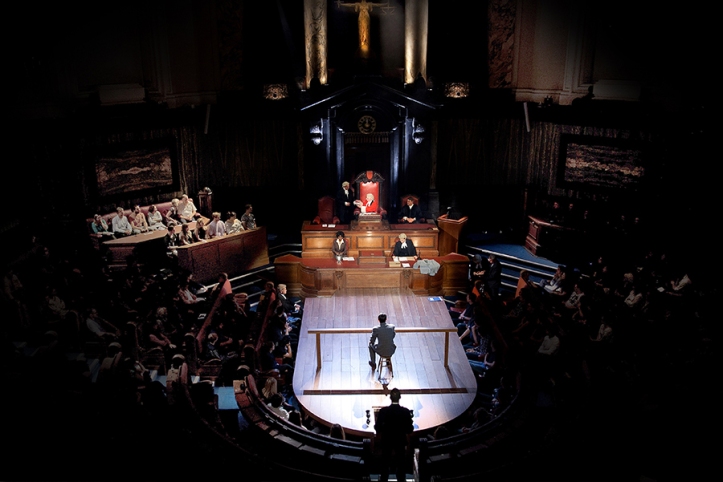
I’ve loved Agatha Christie’s books since I was a teenager. Who, after all, doesn’t enjoy a good who-dunnit? The undoubted Queen of Crime – albeit the subject of ongoing criticism – Christie’s books continue to outsell even ‘The Bible’; their popularity shows no signs of abating and the TV, film and stage versions continue to come thick and fast.
The latest stage production to join ‘The Mousetrap’ in London is ‘Witness for the Prosecution’, which you may well have seen advertised; it’s been heavily promoted all over the place. One of the reasons for this is its location; rather than taking place in a conventional theatre, the producers made the ingenious choice of County Hall.
Ingenious – and inspired. County Hall is located on the South Bank, opposite the London Eye, and is the former headquarters of the Greater London Council (GLC) and the Inner London Education Authority (ILEA). Designed by Ralph Knox, this striking, Edwardian Baroque building was opened in 1922 by King George V. These days, it plays host to the London Aquarium, London Dungeon and hotels including the Marriott, where we hastened, post-play, for a delectable afternoon tea.
Hearteningly, the renovations to County Hall have been carried out sympathetically and most of the building’s original features retained. So, although The Library now serves as a lounge/restaurant, its bookshelves, lined with elderly political tomes, remain firmly in place.
Elsewhere, you encounter marble panelling engraved with the names of all the councillors who worked in County Hall (a certain Ken Livingstone among them) and the whole place retains an incredible sense of history. But why, you ask, would one think to install a theatre here?
Two words: Council Chamber. The majority of ‘Witness for the Prosecution’ takes place in a courtroom and said Chamber, which also retains all its original features, looks eerily like a courtroom. Its confined space means that you’re brilliantly close to the stage and feel as though you’re part of the proceedings. Indeed, members of the audience ‘play’ the jury and are treated just the same as the actors, with the judge pausing from time to time to address them.
We loved the play; it’s wonderfully acted. No “big” names as such, although both the prosecution and defence barristers looked familiar, but each performance is spot-on and there’s a genuine tension in the room as the accused, on trial for his life in 1930s Britain, pleads with the jury to believe in his innocence.
The staging is simple but effective, involving just a handful of props which the actors themselves carry on and off the stage when necessitated by a change of scene. It’s the Council Chamber itself which is the biggest prop, however – and it provides the perfect backdrop for a cracking couple of hours’ entertainment. There’s a neat twist, too, at the end – I won’t spoil it for you and will urge you instead to go and watch this superb slice of theatre and discover County Hall and its history for yourselves. You won’t regret it.
Love her books but I have yet to see the Mousetrap!
LikeLiked by 1 person
It’s well worth going to if you get the opportunity!
LikeLiked by 1 person
Fantastic review Liz….. great ambassador for this lovely city! I’m going to look up both the plays- and catch one of them before i leave …..:)
LikeLiked by 1 person
[…] ‘Where is Mrs Christie?’, based around the 11-day disappearance of the celebrated author & playwright in 1926. I’ve actually stayed at the hotel where she was, eventually, found – The Old Swan, in […]
LikeLike
[…] than seven Agatha Christie productions ran in the West End. Nor was she afraid to take risks; ‘Witness for the Prosecution’, widely considered to be her best play, has stunned audiences and critics alike for decades with […]
LikeLike